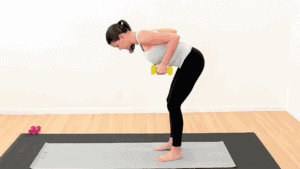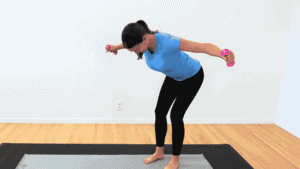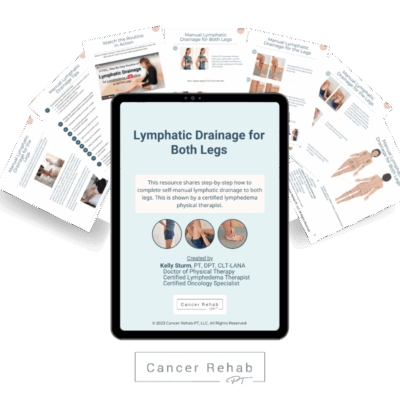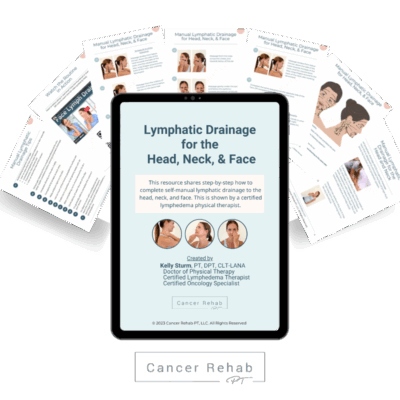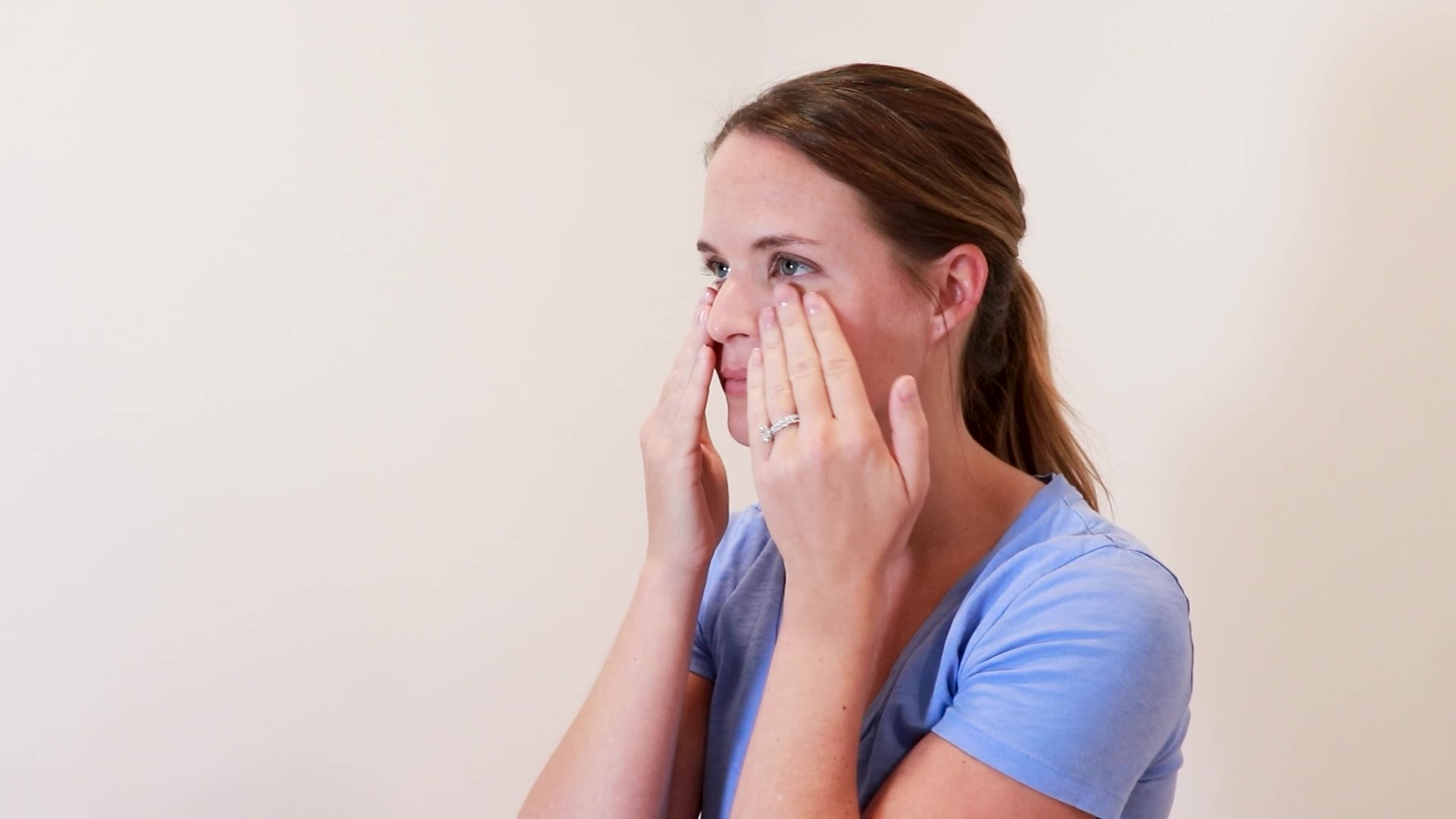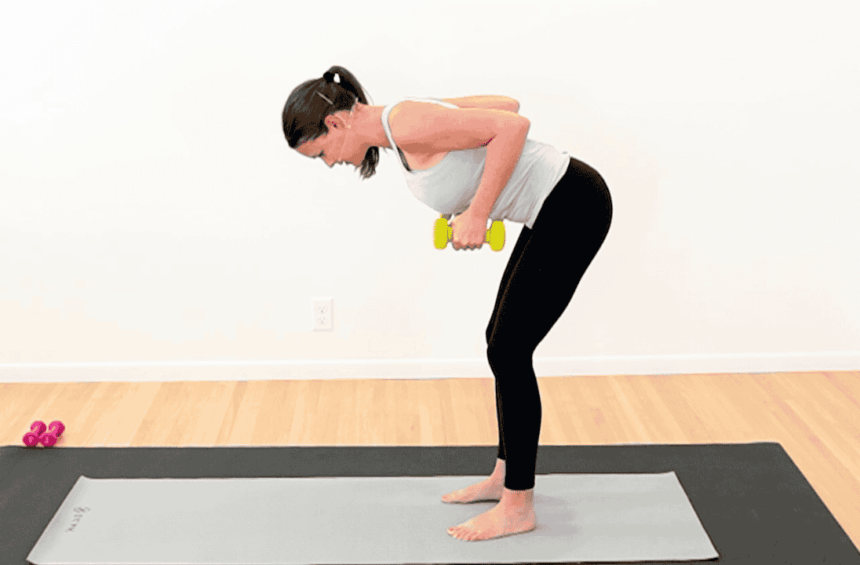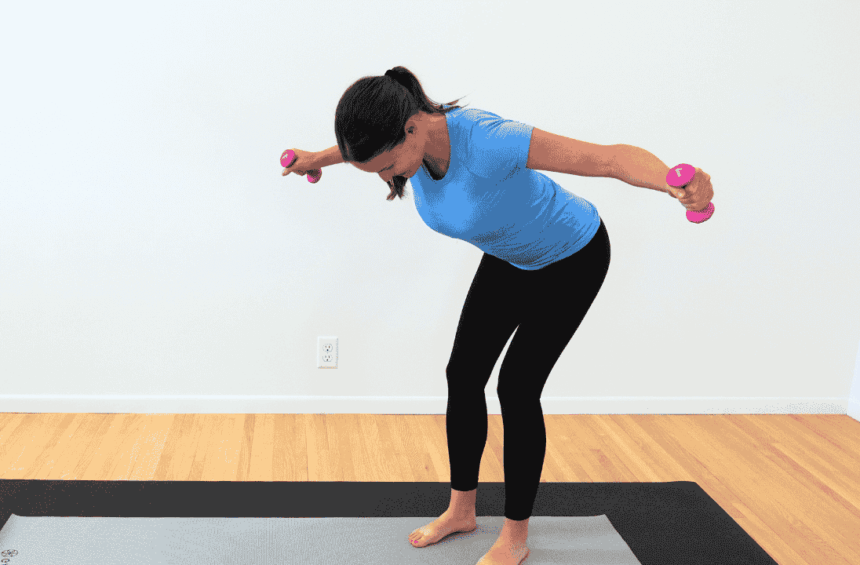Lymphatic drainage massage is a gentle technique that stimulates the flow of lymph fluid throughout the body. There are many benefits of lymphatic drainage massage, especially for people living with chronic swelling (lymphedema) or those recovering from breast cancer surgery.
Many people also use lymphatic drainage for general health benefits, particularly facial lymphatic massage to reduce puffiness and improve skin appearance.
Here’s everything you need to know about the benefits of lymphatic drainage massage, explained by a lymphatic specialist and a certified lymphedema therapist, Kelly Sturm.
What Is Lymphatic Drainage Massage?
Lymphatic drainage massage is a specialized technique that can help reduce swelling and improve your immune system function.
The lymphatic system doesn’t have a pump (unlike the circulatory system with the heart), so it relies on muscle movement, breathing, and manual stimulation to move fluid efficiently.
When this system becomes compromised, as in lymphedema or after lymph node removal during cancer treatment, fluid can accumulate in tissues, causing swelling and discomfort. Sometimes there’s also swelling because of everyday factors, like hormonal fluctuations or eating a lot of salt.
Lymphatic drainage massage works by using very light pressure and specific hand movements to encourage the natural flow of lymphatic fluid. This helps your body remove waste products, toxins, and excess fluid more effectively.
It’s also sometimes called manual lymphatic drainage massage.
Who Needs Lymphatic Drainage Massage?
Lymphatic drainage massage can help with certain medical conditions as well as your general health goals. It’s often an important part of your physical therapy routine for lymphedema or cancer recovery.
Lymphatic drainage massage helps with:
- Lymphedema (chronic swelling) management
- Recovery after breast cancer surgery or lymph node removal
- Reducing post-surgical swelling
- Improving chronic venous insufficiency symptoms
- Decreasing facial puffiness and improving skin appearance
- Supporting immune system function
- Reducing water retention and bloating
- Speeding up healing from injuries
- Improving symptoms of fibromyalgia
- Reducing symptoms of chronic fatigue syndrome
- Improving rheumatoid arthritis symptoms
You can benefit from manual lymph drainage if you notice persistent swelling in your arms, legs, face, or other parts of the body, especially if it’s worse at the end of the day or after sitting or standing for long periods.
If you’ve had lymph nodes removed during cancer treatment and notice any swelling, even mild, it’s important to seek professional help early.
Unfortunately, research shows that up to 40% of women treated for breast cancer have lymphedema, a chronic condition that often develops after cancer treatment.
But being proactive and starting to support your lymph system early can help prevent or even reverse lymphedema.
What Happens During Lymphatic Massage?
During a lymphatic drainage massage, you’ll typically lie on a massage table while the therapist uses light, rhythmic strokes to stimulate your lymph flow. The pressure is much gentler than a regular massage. It should never hurt or cause discomfort.
The therapist will usually start at your neck or trunk area, working on areas that drain well before moving to the swollen regions. Sessions usually last 30-90 minutes, depending on the areas being treated.
You can work with a massage therapist who specializes in lymphatic drainage or a certified lymphedema therapist (CLT) who has specialized training in this technique. For medical conditions like lymphedema, working with a CLT is particularly important.
You can also learn self-massage techniques to do at home. Many therapists will teach you basic movements to maintain results between sessions.
These home care routines are especially important for lymphedema self-care.
What Are the Benefits of Lymphatic Drainage Massage?
There are many benefits of lymphatic massage, especially for people managing lymphedema or recovering from breast cancer treatment:
- Reduces swelling in arms and legs affected by lymphedema
- Decreases pain and discomfort associated with swelling
- Improves range of motion in affected limbs
- Prevents lymphedema from worsening over time
- Helps maintain results from lymphedema treatment
- Reduces the risk of infections like cellulitis
- Supports healing after lymph node removal during cancer treatment
- Improves scar healing after surgery
Lymphatic drainage massage helps with many everyday health issues, too.
It can reduce fluid retention and bloating, which makes you feel puffy. Your skin often looks better after this type of massage therapy because it improves blood circulation.
Your immune system works better with good lymph flow, so lymphatic drainage massage can potentially help you fight off illnesses. Many people find it clears stuffy sinuses and eases congestion.
Benefits of Lymphatic Drainage Massage for Face
Facial lymphatic drainage massage can help with both medical conditions (like face lymphedema) and appearance. It can reduce swelling after facial surgery, dental work, or injuries by reducing inflammation and improving fluid balance.
For appearance and general wellness, lymphatic drainage massage can help to:
- Decrease morning facial puffiness and under-eye bags
- Make your skin look brighter and more refreshed
- Temporarily reduce fine lines
- Release tight muscles from stress
- Improve skin health and circulation
- Relieve sinus congestion
If you want to include facial lymphatic drainage massage into your self-care routine, I have a printable Head, Neck, and Face Lymphatic Drainage Massage Guide you can follow!
It works for conditions like face or neck lymphedema and to support your overall well-being.
Benefits of Lymphatic Drainage Massage After Surgery
Lymphatic drainage massage can help with recovery after several different types of surgeries:
- Breast cancer surgery (mastectomy, lumpectomy)
- Lymph node removal procedures
- Orthopedic surgeries (joint replacements, reconstructions)
- Cosmetic surgeries (facelifts, tummy tucks, liposuction)
- Vascular surgeries
- Abdominal surgeries
After surgery, your body naturally swells as part of the healing process. Lymphatic massage helps reduce this swelling by moving excess fluid away from the surgical area. This provides pain relief and encourages faster healing.
Always consult your surgeon before beginning lymphatic massage after surgery, and typically wait until your incisions have closed (usually 2-4 weeks post-surgery).
Benefits of Lymphatic Drainage Massage After Liposuction
Liposuction is a cosmetic procedure that removes fat cells from specific areas of your body using suction. Your surgeon will make small incisions and insert a thin tube to remove fat, which can cause trauma to the lymphatic vessels and nodes in the surrounding tissues.
Lymphatic drainage massage after liposuction can help:
- Clear excess fluid from treated areas
- Reduce swelling and bruising that occur after the procedure
- Prevent lumps and uneven areas in the skin
- Break down hardened tissues that can form during healing
- Decrease discomfort during recovery
Ask your plastic surgeon about when you can safely begin lymphatic drainage massage after your procedure.
What Are the Cons of Lymphatic Drainage Massage?
There are many benefits of lymphatic massage, but it’s not right for everyone. People who should avoid it include:
- Those with active infections, inflammation, or fever
- People with certain types of heart conditions
- Individuals with blood clots or thrombosis
- Those with kidney failure
- People with certain types of cancer (unless approved by their oncologist)
Lymphatic drainage is very gentle, but it does move fluids through your body. If you have a medical condition, ask your doctor if manual lymphatic drainage is safe for you.
Where Can I Get a Manual Lymphatic Drainage Massage?
For lymphatic drainage massage, it’s best to work with someone who has specialized training:
- Certified lymphedema therapists (CLTs) have the most extensive training specifically for treating lymphedema. They’re the best choice if you have lymphedema or are at risk of developing it.
- Massage therapists with Manual Lymphatic Drainage (MLD) certification have training in lymphatic techniques, though sometimes less extensive than CLTs.
You can find qualified practitioners through your doctor’s referral, the Lymphology Association of North America (LANA), or specialized physical therapy clinics.
If you have lymphedema or are recovering from cancer treatment, check that your insurance covers these specialized sessions.
Can I Do Lymphatic Drainage Massage on Myself?
Yes, you can do lymphatic drainage massage at home, but it’s very important to have proper technique. You should learn the correct direction to move fluid, use gentle pressure, and follow a reputable resource.
I’m a certified lymphedema therapist, and I have several resources available to help if you struggle with swelling and want to improve your lymph drainage.
Lymphatic Drainage Massage Guides
You can follow these step-by-step guides to do lymphatic drainage massage on different parts of your body. They’re all printable.
- Left Breast Manual Lymphatic Drainage Guide
- Right Breast Manual Lymphatic Drainage Guide
- Head, Neck, and Face Manual Lymphatic Drainage Guide
- Both Legs Manual Lymphatic Drainage Guide
- Left Leg Manual Lymphatic Drainage Guide
- Right Leg Manual Lymphatic Drainage Guide
- Both Arms Manual Lymphatic Drainage Guide
- Left Arm Manual Lymphatic Drainage Guide
- Right Arm Manual Lymphatic Drainage Guide
You can also browse more digital guides for lymphatic system support, lymphedema, and breast cancer recovery.
Lower Body Lymphedema Rehab
If you have lymphedema of the lower body (such as the pelvic area, legs, ankles, or feet), you can learn ways to manage your symptoms in my physical therapy program, Lower Body Lymphedema Rehab. It has education on manual lymph drainage as well as many other ways to reduce swelling.
Breast Cancer Rehab
Breast cancer treatment increases your risk of developing lymphedema, a lifelong condition that causes swelling. You can find support with arm lymphedema, breast lymphedema, and general recovery in Breast Cancer Rehab.
FAQs
What Happens to Your Body After a Lymphatic Drainage Massage?
After a lymphatic drainage massage, your body continues to process and eliminate the fluid that was moved during your session. You might notice having to use the bathroom more often as your kidneys filter this excess fluid. Many people feel lighter and less bloated as their swelling goes down. Some people feel energized after treatment, and others feel relaxed or even slightly tired as their body processes the changes. Your body may also experience a temporary boost in immune function.
How Often Should You Have a Lymphatic Drainage Massage?
It depends on your specific circumstances and goals. For active lymphedema management, lymphatic drainage massage is often something you’ll continue to do daily, weekly, or as needed to reduce swelling. It becomes a part of your routine. For post-surgical recovery, you may need to do lymphatic drainage massage for several weeks after surgery. For general health and wellness, you can do it whenever you notice being bloated or puffy.
How Do I Know If My Lymphatic System Is Clogged?
The most common sign that your lymphatic system isn’t functioning efficiently is persistent swelling. It might get worse as the day progresses, and it’s most common in your arms, legs, and face. Other potential signs include frequent mild infections, slow healing from injuries, unexplained fatigue, or clusters of tiny bumps under your skin.
If you’ve had lymph nodes removed or damaged through cancer treatment, surgery, or radiation, you’re at higher risk for lymphatic issues and should watch for early signs of swelling.
How Soon Do You See Results From Lymphatic Drainage Massage?
Many people notice some immediate results after a lymphatic drainage massage. Visible improvements can also often appear within hours or by the next day after treatment. For chronic conditions like lymphedema, consistent treatment over several weeks in combination with other management practices typically shows the best results.
Can You Lose Weight with Lymphatic Drainage?
Lymphatic drainage massage isn’t a weight loss treatment. You might see a temporary drop in weight because of fluid reduction after a session, but this is water weight, not fat loss. That said, some people notice that when swelling and bloating decrease, their body contours become more defined.
Is It Better to Do Lymphatic Drainage in the Morning or at Night?
There’s no universal “best time” for lymphatic drainage massage. It depends on your personal needs and schedule. Doing lymphatic drainage massage in the morning can help you reduce overnight fluid buildup, especially in your face. At the same time, evening sessions may help reduce swelling that has accumulated during the day. For medical conditions like lymphedema, being consistent with your routine is more important than the time of day.
Final Thoughts on Lymphatic Drainage Massage
Lymphatic drainage massage works by stimulating your lymph vessels to move fluid more efficiently through your lymphatic system. It can be beneficial for your overall health as well as to manage conditions like lymphedema or help with breast cancer recovery.
You can find more education on the benefits of lymphatic drainage massage and how to do it in my digital guides, Lower Body Lymphedema Rehab, and Breast Cancer Rehab.

